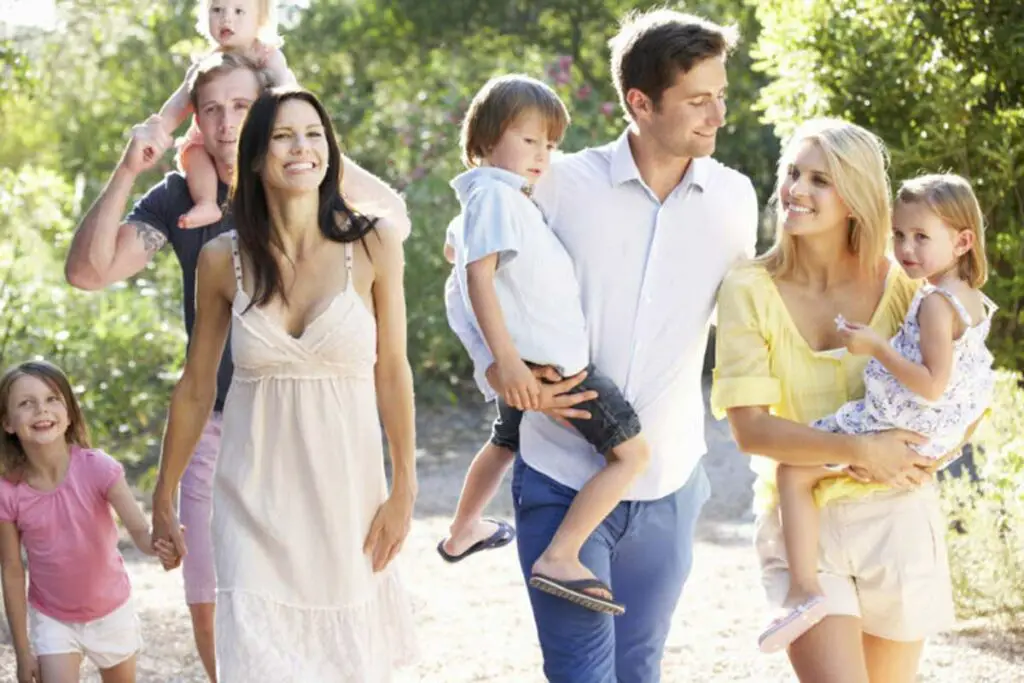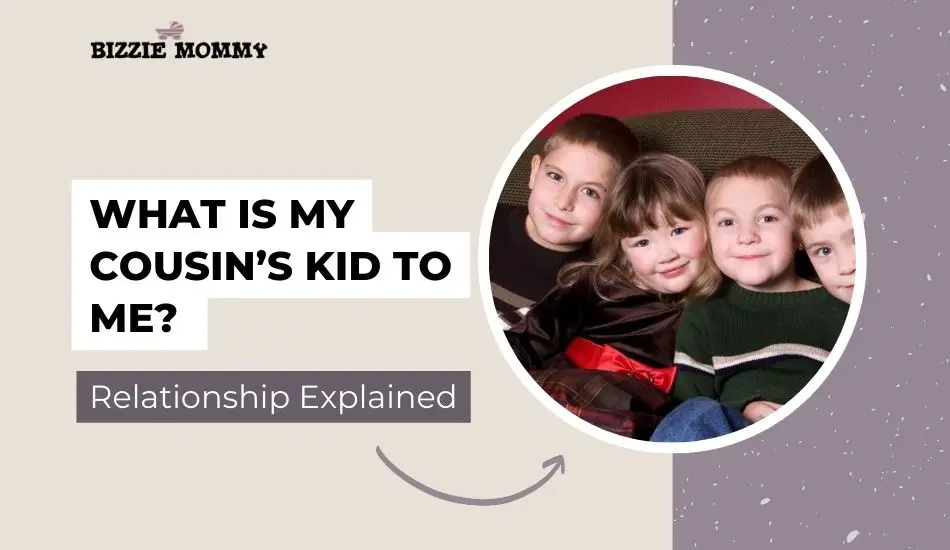Families are complicated. Decoding how you are related to your extended family may be difficult, specifically discerning your cousins. Are you asking yourself, what is my cousin’s kid to me?
The simple answer is they are your nieces and nephews. You may confuse them with your cousins, but they are not your cousins. Your relationship with them depends upon their generation. They are your cousins if they are from the same generation. They are your children’s second cousins if they are from the next generation. Confused? Let’s simplify these relationships.
Defining Family Relations
When you set out to define relationships beyond your siblings, you soon realize it is quite complicated. But fortunately, there is a way to differentiate between relationships. If you learn some pointers, you will never be confused again. So, let’s start by defining these familial relations.
Aunts and Uncles
The most important relationships are with the siblings of one’s parents and their families. These are commonly referred to as aunts, uncles, nieces, and nephews. The siblings of your parents are your uncles and aunts. Other than siblings, the spouse of your aunt or uncle is also your uncle or aunt. Simply, siblings and spouses of parent’s siblings are all under the umbrella of aunts and uncles. In the case of same-sex marriage, your uncle’s husband is your uncle, too, just like your aunt’s wife is also your aunt.
Niece and Nephews
Now comes the relation to your sibling. Your sibling’s son is your nephew. Similarly, your niece is the daughter of your sibling. Also, in an extended family, you can call the children of your cousin’s nieces and nephews, too.
Grandparent relationship
In the family tree, the word grand signifies that the relations are two generations apart. For example, grand means that grandchildren and grandparents are of two different generations. The order of generation is grandparent, then their children as parents, and then their grandchildren.
Grand is also used in the same way as other relations like a grandaunt and granduncle. Your grandparent’s siblings are your grandaunts and granduncles.
Great grandparent’s relationships
Add another generation and you have the great-grandparents. For example, if it’s great-grandmother, there are three generations in between, while if it is great-great-grandmother, it means four generations in between relations.
Similarly, great and grand also apply to other relatives. Great-grandniece means a nice three generations away. It also works with your aunt and uncle such as great-grandaunt or great-granduncle.
Cousins and Their Children

Your cousins are the kids of your parent’s siblings. But what about your parents’ cousins’ kids? What is with the numbers first, second and third? One cousin at a time. Let’s start with your first cousin.
First Cousins
You share a common grandparent with your cousins. You and your cousin’s parents must be siblings. Your parents belong to the same generation as their parents. You and your cousins belong to the next generation and are known as first cousins.
Now it comes to the children of your first cousins. I’m sure that you must be thinking, if my cousin has a baby, am I the aunt? Not exactly. Your first cousin’s child is called your first cousin once removed. The “once removed” shows the difference between generations, meaning this is your first cousin’s child.
Second Cousins and Their Children
Let’s clarify what are second cousins. Your cousin’s kids and your kids are second cousins to each other. They have similar great-grandparents. They have the same common ancestors, starting from great-grandparents to a great-great-grandparent and so on, backward through the extended family.
What are you to call your cousin’s children? You can’t refer to them as the first cousin once removed; that would be too weird. The safer choice is to call them niece or nephew, depending on their gender. They, in turn, can call you aunt or uncle. Of course, your kids can call them cousins because they are still cousins.
Third Cousins & So on
Add a generation and you have your third cousin. Your parents are the second cousins to the parents of your third cousin. Like your second cousin is the child of your parent’s first cousin. This means your kids and the kids of your third cousins are fourth cousins.
You and your third cousin also have a common ancestor, your great-great-grandparents. Usually, your great-grandparent is siblings with the great-grandparent of your third cousin.
Extended Family Tree
The extended family is your family beyond your home. Typically, extended families include blood relations, relations by marriage, in-laws, and half relationships.
Every society defines family differently. Also, the way these relationships interact depends on the culture they live in. For example, in some cultures, cousins are allowed to marry, while this is frowned upon in others.
Extended families live together in certain cultures, called joint families. In such a family, brothers, their families, their children, and their parents live together in one house. In other cultures, these families don’t share one home but live differently and independently. Furthermore, their members also live separately after a certain time or age.
In a nuclear family, two siblings live separately with their wives and kids. This is common in western cultures, and it is becoming more common in other cultures, too.
What Is Your Likely Relation with The Kids of Cousins?
Let’s look at your relationship with the children of your cousins. They are your first cousin once removed. What does “removed” mean? It may sound like a complicated term, but it simply means your cousin’s children. If it says your cousin twice removed (a gap of 2 generations), it means your cousin’s grandchildren. Simply, they are your niece and nephews by name and second cousins to your kids.
But remember, at the end of the day, you do share blood and family ties with the kids of your cousins. You may become their friend or their fun aunt or uncle. What you call them and what they call each is entirely up to you and your family.
Kids change your relationship dynamics greatly with your families. Their birth not only helps in bonding relationships with your cousins but also gives you and your cousin a chance to be close again, the closeness which had been lost in time returns. Therefore, like you love your siblings’ children you have a close bond with the kids of your cousins.
At times, competition and rivalry take up space in the relationship of your kids and your cousins’ kids but in the long term you people as a family look beyond these petty matters and strive to remain a closely-knitted family in the bigger picture.
What Are Second Cousins?
If we see the basics, then second cousins are the children of your first cousins and are the second cousins to your kids. The word second adds a generation. If two-second cousins have kids, those children would then be third cousins to each other.
Ways to Determine Your second Cousins
Are you still overwhelmed? Let’s simplify this further. Your hint would be to find out the common ancestor between yourself and your second cousin. For example, in first cousins, the common ancestor is your parent, whose brother or sister’s kid is your cousin.
So, once you have carefully determined your common ancestor, find the number of generations that exist between the common ancestor and your cousin. If your parents are common ancestors, there is a one-generation gap, therefore, your cousin is the first cousin. If your grandparents are common ancestors, there is a two-generation gap.
Bottom Line
Hopefully, this resolves your confusion regarding how family members are related. Family relations vary from family to family and are grouped by cousins, grandparents, great-grandparents, siblings of parents, and their children.
You have different relationships with the children of your cousins according to gender and family ties. Your second cousins are the children of your first cousins once removed while adding another generation here will give you your third cousins.
There are multiple ways you can use to determine your cousins. The best way is to trace back your relationship to your common ancestor. You will automatically pinpoint the relationship between your second, third, or even fourth cousins by knowing the number of generations in between yourself and your cousin.
Discerning how you are cousins to each other does not have to be difficult. You can determine your relationship with anyone in the family if you are certain of your common ancestors, and your parent’s relation to the party in question. Bear that in mind, and you will never be confused.

